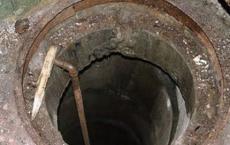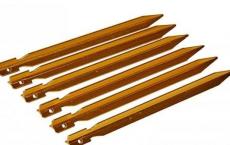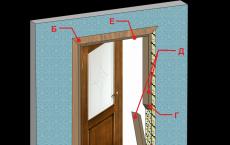How to choose and correctly use biopreparations for cesspools?
In private houses and summer cottages, the only solution for wastewater disposal was, and still remains, an autonomous sewage system, which provides for the mandatory presence of a cesspool. And today, biological products for cesspools do an excellent job of cleaning. Until recently, the lack of such assistants has been a bit frustrating for private sector owners. After all, the aromas from the pits caused discomfort not only to the owner, but also to the neighbors.
A cesspool is the most primitive type of local sewerage device. However, drain pits are still often used in cottages or other facilities with a small amount of drains. To increase the efficiency of this facility and eliminate unpleasant odors, it is recommended to regularly use modern biological products for cesspools.
How is wastewater treated?
Wastewater contains decaying organic matter. This is feces, sometimes food waste. Getting into septic tanks or cesspools, wastewater is actively exposed to biological products. All biological products contain active bacteria, for which wastewater is both a habitat and food. Under the influence of biobacteria, the decomposition of organic waste occurs at an accelerated pace.
Recycled waste in cesspools, in the form of purified water, usually goes into the ground on its own or is pumped out with an irrigation pump. If earlier drainage was silted up in a cesspool or in a street toilet, then with the help of bacteria, its activity is restored, and the purified water enters the soil.
After the application of bacteria, such a cesspool can already be considered a bio cesspool. Since living bacteria are in it in the form of activated sludge, the same as in cases with septic tanks.
Types of biologically active bacteria
1) Anaerobic bacteria. These are the most common dietary supplements for cesspools. This is a type of bacteria whose activity is possible in the absence of oxygen. This type is more suitable for closed septic tanks, where the process of fermentation and decay takes place in closed chambers. However, the purification method using this type of bacteria occurs at a faster pace.

2) Aerobic bacteria. With the help of aerobic bacteria, bio-cleaning of cesspools takes place. These bacteria are able to process solid and liquid organic waste. The decomposition product falls to the bottom of the pit in the form of activated sludge, and the purified water goes into the ground through natural drainage. Activated sludge is viable and can be used for subsequent wastewater treatment.
Make a bioseptic with your own hands
- Determine the depth of groundwater. If there is a well nearby, then this is easy to do. If not, then you can ask for help from a specialist. Sometimes two meters is enough to dig and install a bioseptic for cesspools.
- The average consumption of water by one person, experts expect 300 liters per day. Thus, it is possible to calculate the approximate volume of the future septic tank. The average time spent in a septic tank is about three days. In a word, the volume of a septic tank for a family and four people should be approximately 4 cubic meters.
- Lay out the walls of the septic tank with bricks and install a partition. Install a window in the partition for pouring purified water into the adjacent chamber. In the first compartment it is necessary to concrete the bottom.
- Close both compartments with sheets. For this, slate sheets or ready-made concrete coverings for septic tanks are suitable. It should be remembered that it is necessary to have gas outlet windows. Often, rings for septic tanks are used for self-installation of a cesspool. It's cost effective and doesn't cause much hassle.
This is the simplest and most acceptable method for installing a septic tank. But, if you have not experienced this before, then it is best to entrust such work to specialists.
Benefits of using bioactivators
In modern country houses or cottages, in dachas, as a rule, there is no way to connect to the central sewer systems. Therefore, the owners equip drain pits on the plots.
This often frightens not quite enlightened people. But modern technologies allow not only to save the budget of a family that has a septic tank and bioactivators for cesspools in them.

This will help to use purified water for the needs of the site, completely eliminate the smell that is usually present near toilets and drain pits, and refuse the services of a sewage truck. In a word, if you paint it point by point, it looks something like this:
- Complete disposal of waste.
- Absence of pathogenic microbes.
- The complete absence of a characteristic smell, even if the drain pit is located close to the house.
- The volume of sewage in the cesspool is reduced.
- The silting of the bottom is excluded, the drainage system of the cesspool is cleaned, as well as pollution on the drain pipes.
- Complete rejection of the disposal of masses from the cesspool.
How to choose the right biopreparation
Let's figure out how to choose a bioactivator for cesspools. The main condition is the use in accordance with the attached instructions. We can just give a few useful recommendations for those who are using biological preparations for septic tanks and cesspools for the first time:

- If you need to use fecal matter as a fertilizer, then you can pay attention to the tablets. They are able to process not only feces, but also toilet paper into a colorless and odorless liquid. The bacteria, at the same time, remain at the bottom of the pit in the form of sludge, which can also be used for fertilizer.
- In other cases, powders or liquid preparations can be used. In modern septic tanks and pits, where such preparations are used, wastewater is purified by almost one hundred percent. Therefore, such water is more likely to be useful for irrigation than for fertilizer.
Advice! It is worth remembering that this is technical water. It is not recommended to eat or give to animals. But the remaining bacteria can be used for feeding. Do not be afraid that they will not remain. Like any living organism, they are able to reproduce in favorable conditions. Therefore, you can safely use it to feed trees or as a gift to neighbors. After all, a small portion of the drug costs a certain amount of money, therefore, any pensioner will be happy with such a gift.
- It is worth recalling that biological products exist not only for cesspools. To date, there are preparations for water purification in pools and ornamental ponds. For the decomposition of fats, for the processing of compost.

- If you notice an unpleasant smell in the room, in the kitchen, then this may indicate the smell from a bucket or garbage container. For this case, the most suitable preparation is micropan - the cesspool is not exposed to it. This is a special drug, the action of which is aimed specifically at eliminating odors. Most often it is used for garbage containers. The drug is presented on the modern market in the form of tablets. It is loaded directly into the container or from the siphon under the sinks, does not pose a danger to the environment and humans.
Biobacteria for cesspools are supplied in the form of powders, tablets or in liquid form. Liquid preparations can be used immediately. Powder preparations should be kept in a certain amount of settled water. The required amount of water is usually indicated on the packaging. It is desirable to use water settled and not chlorinated.
Note! Today's industry offers a large selection of ready-made septic tanks that are fully suitable for use in the private sector and in industrial enterprises. They are equipped with chambers and pumps for pumping purified water. As a rule, the service life of such septic tanks is about 50 years. Thus, you will save on the sewer machine and on the consumption of water for irrigation.
We hope that the information presented here has become useful for the reader, and you have managed to realize all the benefits of using modern biological products for septic tanks and cesspools. Nature itself helps us and takes care of the cleanliness of the surrounding space and saving money.



